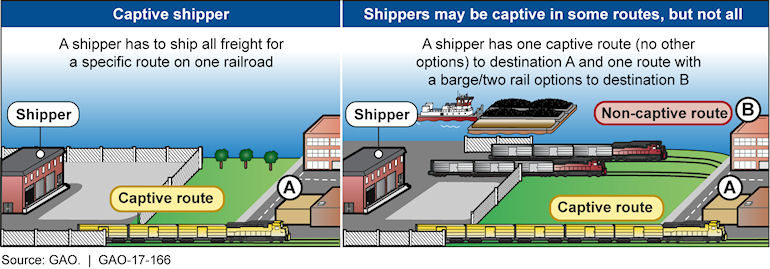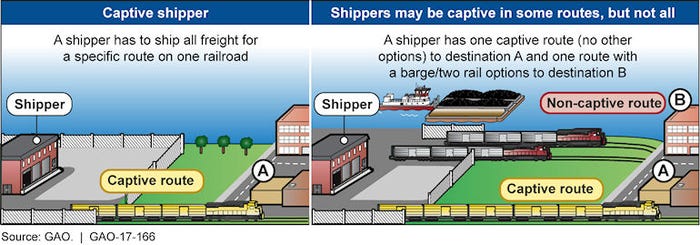GAO report examines rail freight rate concerns
Contract shipping rates offer flexibility to customize rates and terms to specific shipper.
December 12, 2016

The U.S. Government Accountability Office (GAO) issued a report on freight rail pricing and contract practices, which have been subjects of concern to rail shippers. The report, required by the Surface Transportation Board Reauthorization Act of 2015, found that contract (negotiated) shipping rates – compared with tariff (set) rates – offer flexibility but that contracts including rates for multiple origin-to-destination routes can have high rates on some routes.
The report notes that this is an issue particularly for “captive” shippers – ones served by a single railroad and lacking an economically viable transportation alternative.

The nation's freight rail network is vital to the economy, moving about 40% of U.S. freight and generating over $73 billion in revenue in 2013. Railroads charge various rates for moving freight from a particular origin to a particular destination. A rate may be set by the railroad in a public pricing document—known as a tariff—or negotiated through a private contract with a shipper.
While most freight ships under contract, some shippers have raised concerns with how railroads negotiate contracts that contain multiple origin-to-destination routes. Though shippers that use rail to transport freight under tariff may seek relief from STB for rates they view as unreasonable, STB has authority to review tariff rates, but not contract rates.
Representatives of the four largest freight railroads said they charge what shippers are willing to pay to cover infrastructure costs for the entire rail network. However, according to selected shippers GAO interviewed, combining captive and non-captive routes together in one contract can compel shippers to accept some unreasonable rates. Shippers subject to contract rates they view as unreasonable cannot challenge those rates at the Surface Transportation Board (STB) because contracts are not subject to STB oversight. A railroad official said that a shipper may ask the railroad to switch rates the shipper views as unreasonable to a tariff. However, selected shippers said that tariff rates are generally higher than contract rates, so they are reluctant to forgo a contract with a mix of rates in favor of using a tariff.
While tariff rates, which tend to be higher than contract rates, can be reviewed by the Surface Transportation Board for their reasonableness, contract rates cannot. (The board doesn’t have oversight of contracts.) Shippers also said the board process for reviewing tariff rates is “complicated, time-consuming and expensive.”
In 2016, STB began to reform the tariff review process with the goal of improving its efficiency.
The GAO report makes no conclusions or policy recommendations on railroad shipping rates.
You May Also Like


